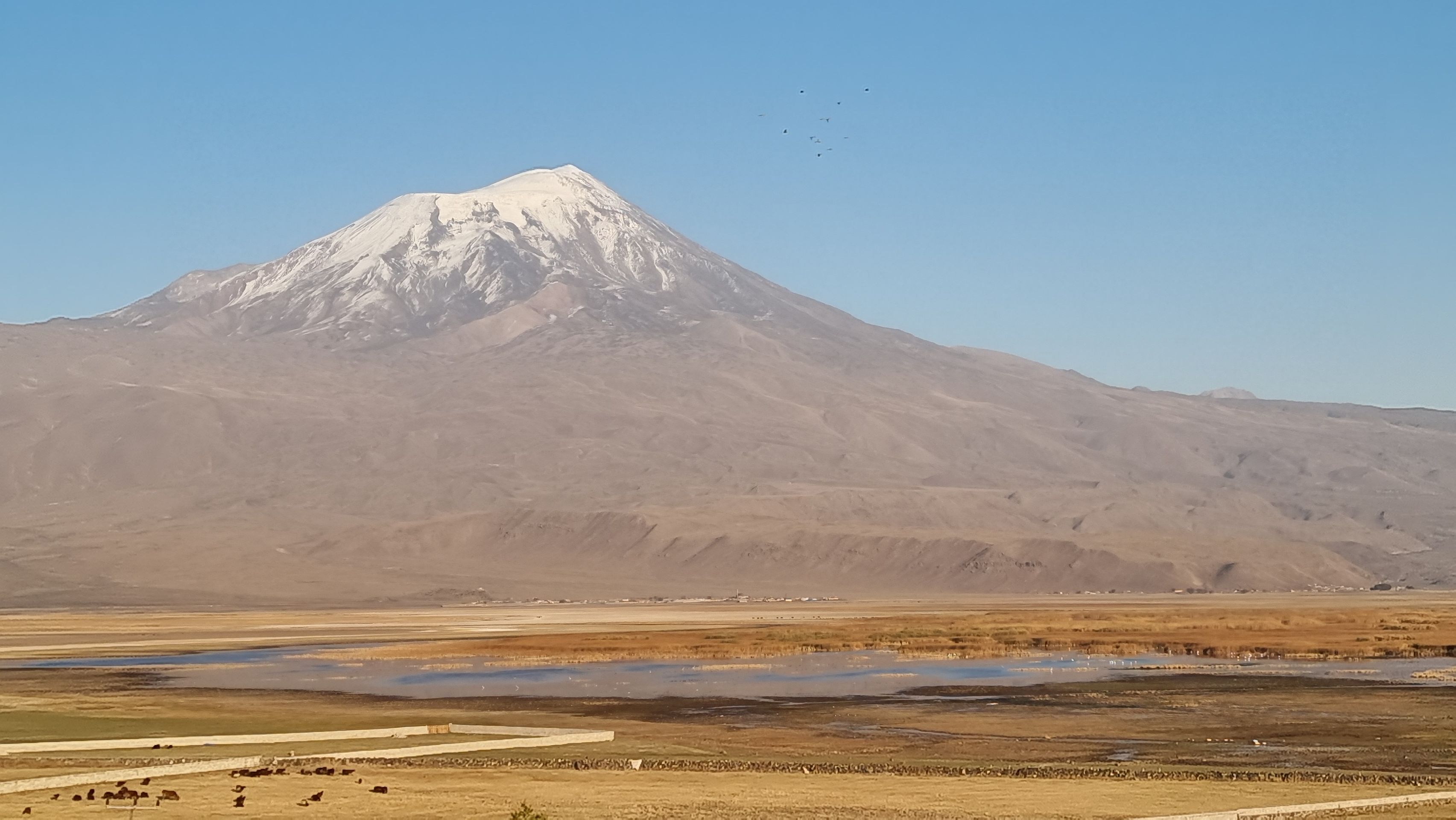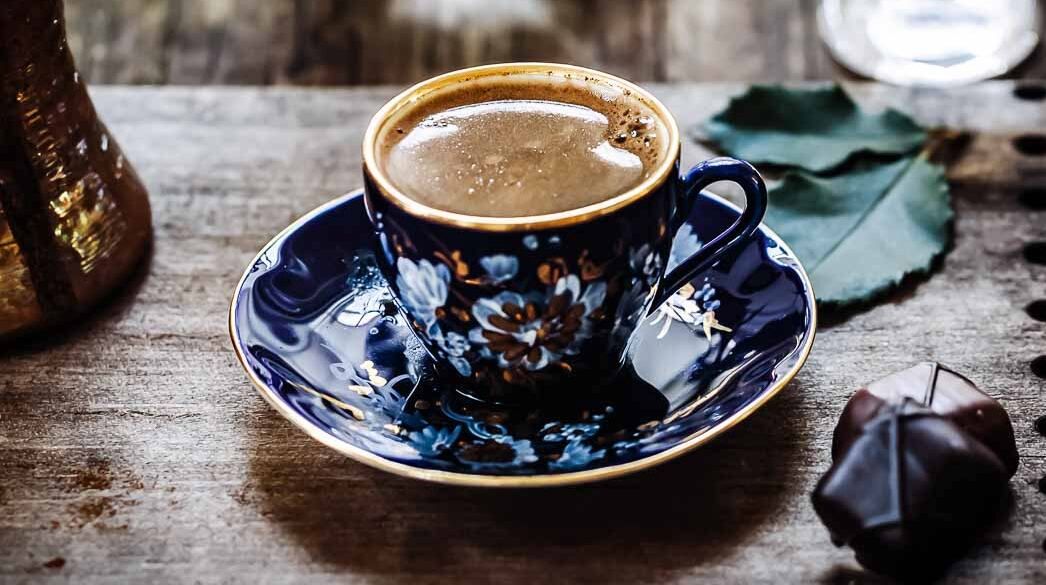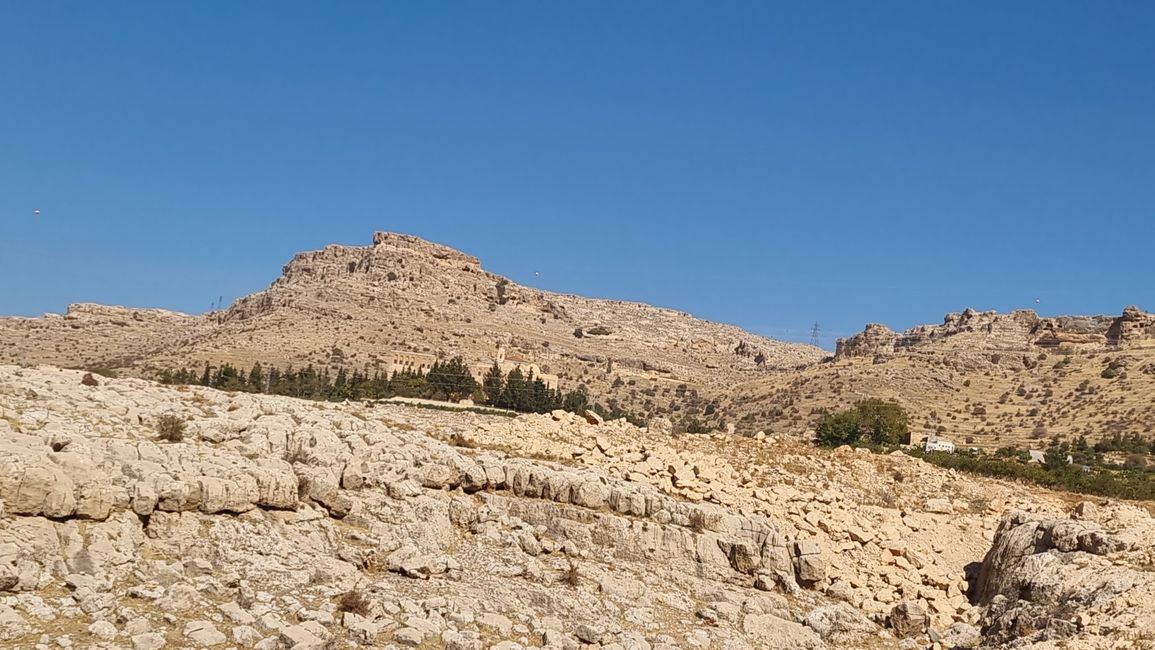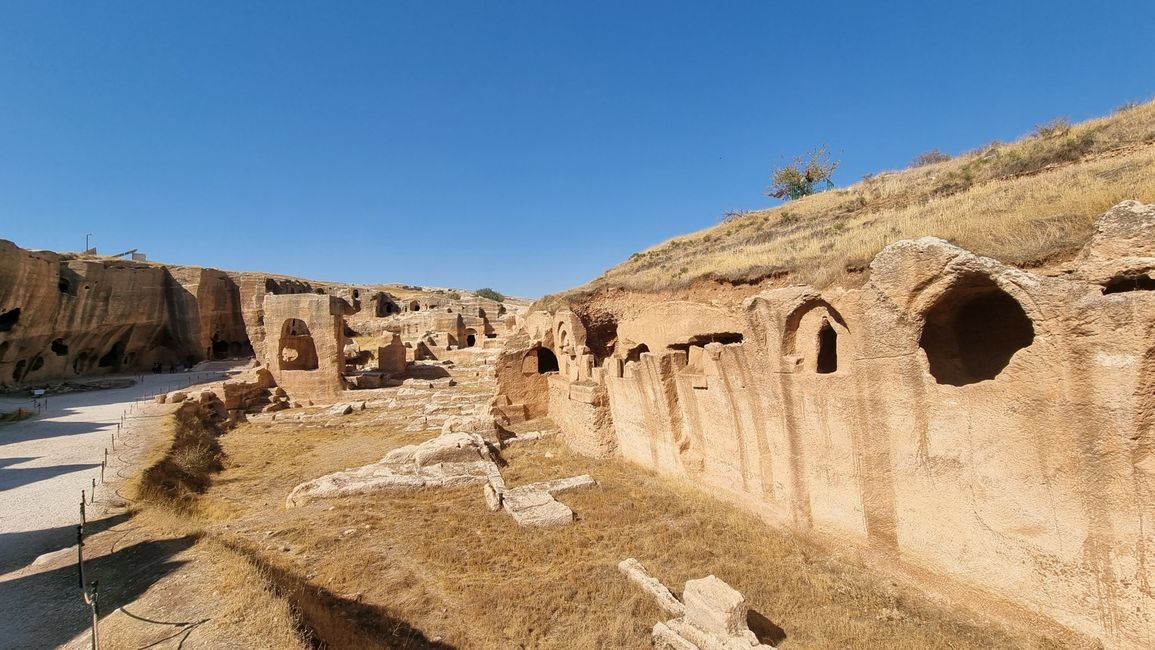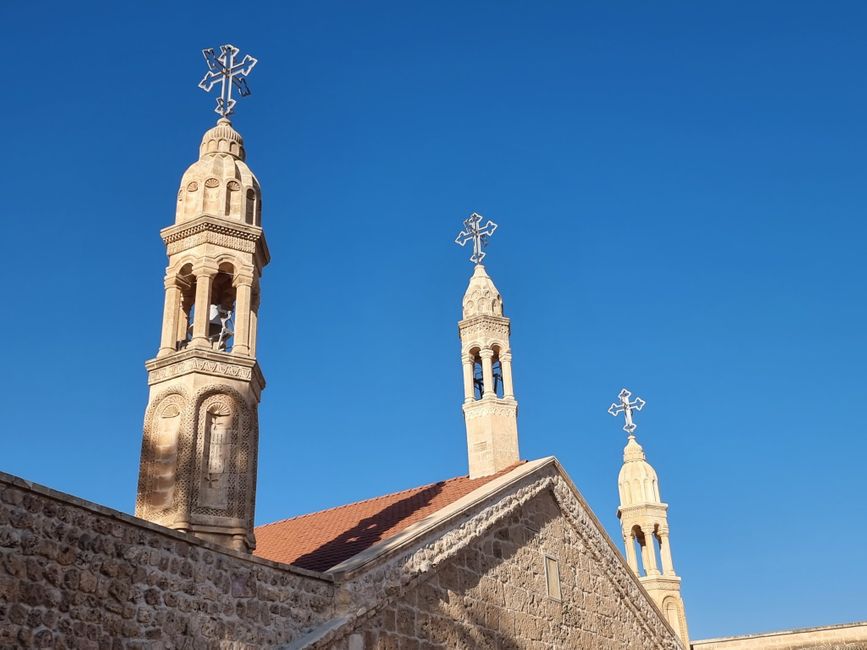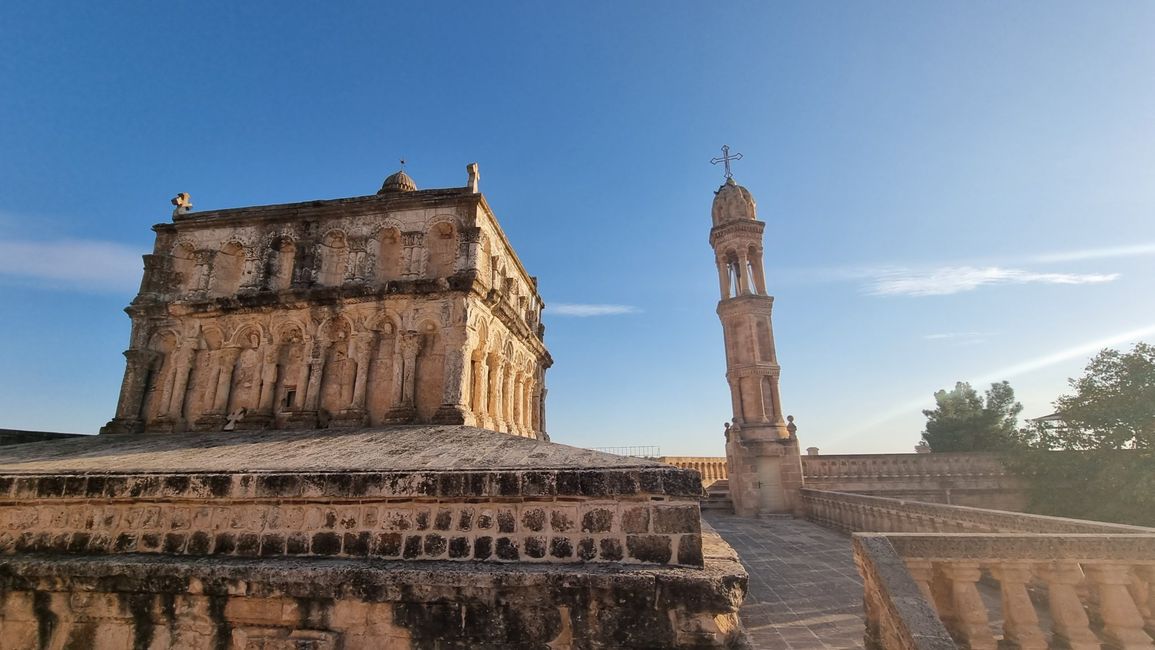Day 23 - Don Curry on Monastery Tour
Cyhoeddwyd: 26.10.2021
During his journey through Anatolia, Don Curry has already visited several churches. However, most of them were only used as museums or picturesque ruins. It was only yesterday in Diyarbakir that he managed to find an 'active' church. But there is an area in Anatolia where Christian life is still very active, with even inhabited monasteries. It is the area south and east of Mardin. Don Curry wanted to explore this area today.
But before that, he enjoyed his best breakfast so far on this trip, not necessarily because of culinary excellence, but because of the location. Breakfast was served on his small private terrace, while he could feast on the spectacular view. In addition to the almost obligatory breakfast items, there were fried eggs, hazelnut cream, and rose jam that actually tasted sweet and floral like roses.
Originally, Don Curry planned to spend the day in Mardin and its immediate surroundings. However, the hotel staff explained that the important buildings in Mardin are closed on Mondays and advised him to visit the monasteries instead. They even provided him with a plan of the recommended order to visit the monasteries and other sights. The hotel's service is truly unbeatable.
Don Curry first drove to Zafaran Monastery, located just 7 km south of Mardin in an imposing mountain landscape. This monastery served as the seat of the Syriac Orthodox Patriarch for a long time and has been extensively restored in recent years. The large and crowded parking lot indicated that he would not be alone here. More than 50 people were already waiting in the cafeteria of the modern visitor center. When Don Curry wanted to buy a ticket at the ticket counter, he was told to wait for another 15 minutes. The number of visitors continued to increase. Then, after the announced break, the crowd started moving; they bought a ticket for €2, it was checked 2 meters further, and then the barrier opened, allowing the entire group of now probably more than 80 people to march towards the monastery building. Two groups were formed, but Don Curry could hardly understand the Turkish-speaking guide at the front. Particularly remarkable was a completely empty room in the basement, which was once a sun temple. Its ceiling consists of ton-heavy stones that were stacked without mortar and remain in their position solely due to the lateral pressure they exert on each other.
Don Curry was also surprised by the high number of other visitors at the next destination, as it was only a few kilometers away from the Syrian border. In Dara, impressive remains of a Byzantine city have been preserved. Don Curry first stopped at the extensive necropolis on the outskirts of the current village. In addition to many rock tombs, one could also enter a large cave chamber on metal walkways, in which collective tombs were located. Numerous skulls and other bones still bear witness to the former inhabitants of Dara. In the center of the village, there are ruins of the former city center, and the exposed pavement of the former main street has been almost fully preserved. However, the real highlight of the visit to this ancient city was the cisterns. One descended almost endlessly through an inconspicuous cellar staircase under an inhabited house, until one landed in a huge underground room that once collected and kept the water of Dara. Don Curry estimated a height of more than 15 meters. He cannot remember ever seeing such a room before.
He then continued eastward through a very dry and later quite mountainous landscape. Only later did Don Curry realize from the map that the road passed directly along the Syrian border. His next destination, the Mor Gabriel Monastery, another Syriac Orthodox main monastery, was located noticeably further from the border, in the midst of a hilly landscape full of olive trees. Here, Don Curry was once again dependent on a Turkish-speaking guide but received an information sheet in English and Arabic when purchasing the entrance ticket. Everything here seemed even more delicate, even more artistic. In the main church, one could even admire Byzantine frescoes.
Through the town of Midyat, Don Curry reached his next monastery, which could only be reached via a dirt road in a wildly romantic landscape. The Mother Mary Church in Hah is considered the most beautiful Syriac Orthodox church in Anatolia. When Don Curry arrived, he was the only tourist; however, a film crew was preparing test shots for a planned documentary, at least that's what Don Curry thought, as he didn't want to disturb the constantly discussing cameramen. So he simply slipped into the interior of the church, which is usually only open for worship on Sundays, and admired the partly ancient liturgical and artistic furnishings. He climbed the stairs to the church roof to get a close-up view of not only the church tower but also the square dome, richly adorned with reliefs, all bathed in the soft light of the slowly setting sun. What a stroke of luck!
Don Curry also made it to the nearby Mor Dismas Monastery in the village of Zaz, but a note on the gate to the church grounds indicated that due to the Covid-19 pandemic, visitation was not possible.
Don Curry returned to his synagogue room, but only reached it after sunset. He asked a staff member to make another restaurant reservation and then set off around 8:00 p.m., accompanied again by the same employee from the previous day who revealed that he had lost 9 kilograms during his first months in Mardin due to constantly climbing stairs. The restaurant 'Leylis' was operated by the former museum director of Mardin and was filled to the brim with old radios, cameras, etc. Unfortunately, it was almost completely full, so the waiters seemed overwhelmed. When Don Curry couldn't place an order even after waiting for 30 minutes, he left the place and found a much quieter location next door called 'Bagdadi'. Here, he could even sit outside on a wind-protected terrace surrounded by medieval Islamic architecture. He ordered a Bagdadi yogurt soup, a Bagdadi salad with pomegranate seeds, and a Bagdadi beef medley with walnuts, figs, and plums.
Satisfied and content, he descended back to his hotel, which he almost immediately found this time. He was starting to become familiar with the old town of Mardin. Once again, he could look back on an exciting day. What pleased him the most was that there is still active Christian life in Anatolia...
Ateb
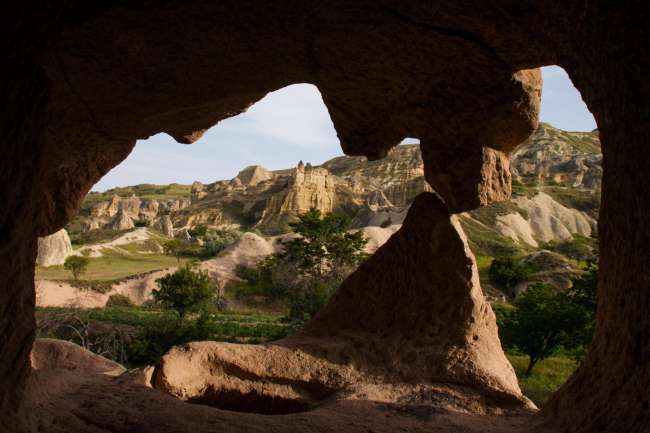
Adroddiadau teithio Twrci
